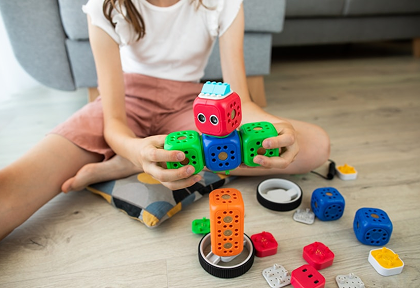Unveiling the Features of the DreamNest™ Smart Crib
Sep 9 2025

Sep 9 2025

The earliest years of a child’s life are like wet clay — soft, impressionable, and full of potential. Every interaction, every game, and every toy shapes how they see the world. Play is not just entertainment; it’s the first classroom. When children play, they aren’t simply passing time — they’re building problem-solving skills, learning to express emotions, and developing the confidence they’ll carry for life.
The earliest years of a child’s life are like wet clay — soft, impressionable, and full of potential. Every interaction, every game, and every toy shapes how they see the world. Play is not just entertainment; it’s the first classroom. When children play, they aren’t simply passing time — they’re building problem-solving skills, learning to express emotions, and developing the confidence they’ll carry for life.
Imagination is the canvas on which children paint their dreams. Through imaginative play, they explore different roles and scenarios, building empathy and understanding. Pretend play allows children to experiment with social dynamics and practice decision-making, laying the groundwork for complex thought processes later in life.
Physical play enhances coordination and balance, sharpening fine and gross motor skills. Activities like climbing, running, and jumping provide not only exercise but also opportunities for children to test their limits and gain a sense of achievement. These experiences are crucial for physical development and health.
Social interactions during play foster crucial communication skills. When children engage in group play, they learn to negotiate, collaborate, and resolve conflicts, which are essential for building friendships and community ties. These early social lessons help them navigate relationships throughout their lives.
In today’s digital age, technology plays a significant role in play. Digital games can offer unique opportunities for learning and creativity, but they also challenge traditional notions of engagement. Balancing screen time with physical play is vital to ensure that technology enhances, rather than replaces, active and imaginative play.
As parents, caregivers, and educators, the best gift we can give is not just a toy but an opportunity — an opportunity to learn, grow, and dream through play. The toys you choose today can spark the curiosity, creativity, and resilience that will guide your child for a lifetime.

Three thoughtfully designed toys — each created to spark learning, imagination, and confidence in the earliest years.